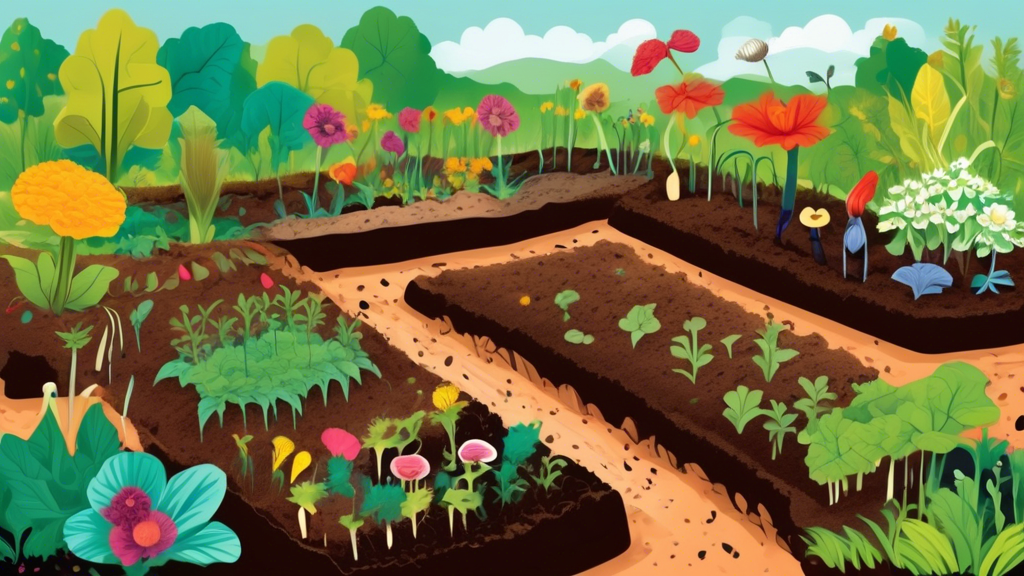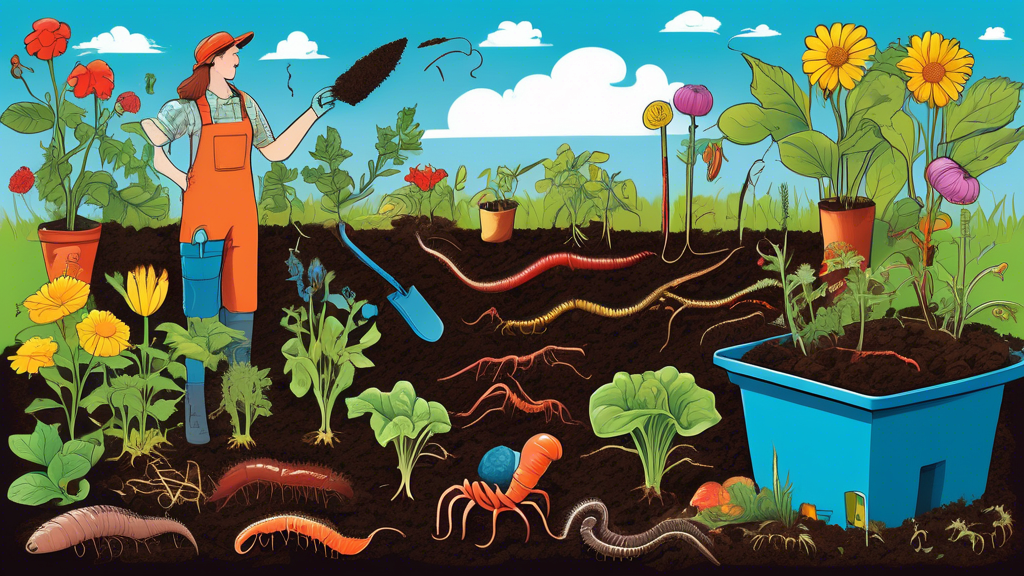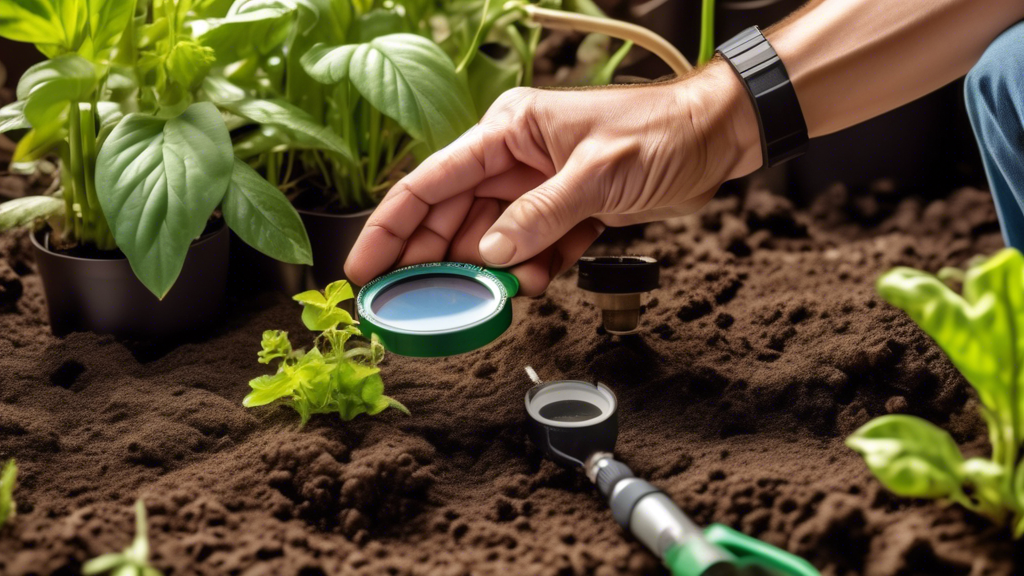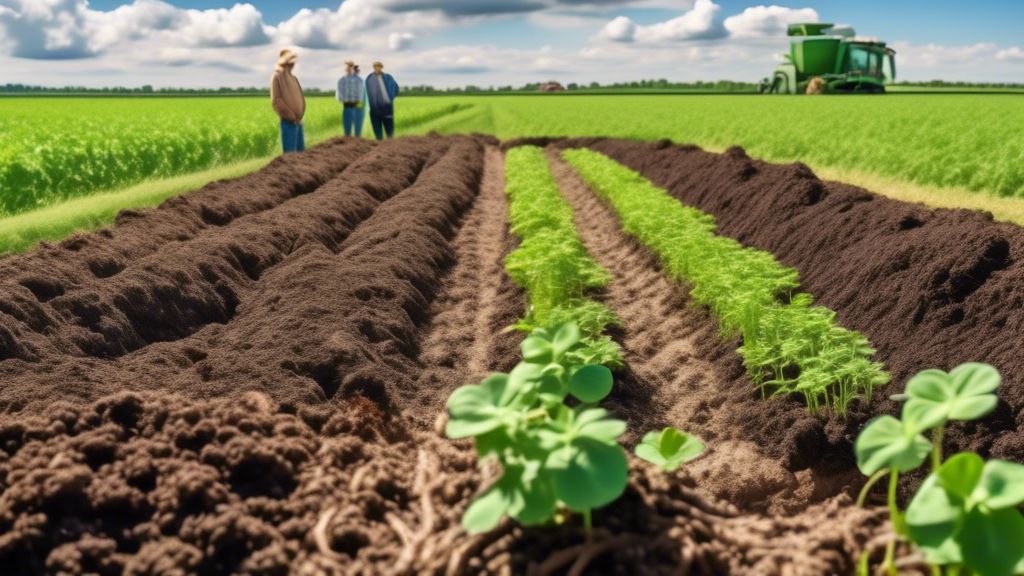
Understanding the Science of Fast Composting
Composting is a natural process, but understanding the biology behind it is the key to making it work faster. At its core, composting is the work of billions of microorganisms breaking down organic matter. To keep these tiny workers happy and productive, you need to provide them with the perfect environment.
The Four Key Ingredients for Rapid Decomposition
Think of your compost pile as a living engine. For it to run hot and fast, it needs four key ingredients:
- Carbon (Browns): The energy source. This includes materials like dried leaves, straw, cardboard, and paper. They provide the carbohydrates for microbes.
- Nitrogen (Greens): The protein source. This includes kitchen scraps (fruit/vegetable peels), grass clippings, and coffee grounds. They provide the protein that builds microbial cells.
- Oxygen: Fuel for the microbes. Aerobic (oxygen-loving) bacteria are the powerhouses of a fast, hot, and odor-free compost pile.
- Water: The medium for life. Microbes live in the thin water film on organic matter. The pile should be as moist as a wrung-out sponge.
Actionable Tips to Turbocharge Your Compost Pile
Now that you know the science, here are the practical steps you can take to dramatically speed up the decomposition process.
Master the Carbon-to-Nitrogen Ratio
The balance between carbon (browns) and nitrogen (greens) is arguably the most critical factor. While the ideal scientific ratio is 25-30:1, a simple rule of thumb is to use 2 to 3 parts browns for every 1 part greens by volume.
| High-Nitrogen “Greens” | High-Carbon “Browns” |
|---|---|
| Vegetable Scraps | Dried Leaves |
| Fruit Waste | Straw or Hay |
| Coffee Grounds | Cardboard (shredded) |
| Fresh Grass Clippings | Paper (uncoated) |
Chop and Shred Everything
Smaller pieces have more surface area, giving microbes more places to eat. Running a lawnmower over fallen leaves, chopping large vegetable stalks like broccoli stems, and shredding cardboard boxes before adding them can cut composting time in half.
Turn and Aerate Your Pile Regularly
Turning the pile is like stoking a fire. It introduces essential oxygen, redistributes moisture and microbes, and prevents the pile from becoming compacted and anaerobic (which causes bad smells). For the fastest results, aim to turn the pile every 3 to 7 days.
Maintain Ideal Moisture Levels
Your pile should feel like a damp sponge. If it’s too dry, microbial activity grinds to a halt. If it’s too wet, it becomes a slimy, smelly mess. In dry weather, water the pile as you turn it. During heavy rain, cover the pile with a tarp to prevent it from becoming waterlogged.
Advanced Tricks for the Impatient Composter
Once you’ve mastered the basics, these advanced techniques can push your compost into overdrive.
Use a Compost Accelerator or Activator
Commercial accelerators are available, but you can achieve the same effect for free. A unique and highly effective trick is to add a shovelful of finished compost or garden soil to your new pile. This “inoculates” it with a ready-made, diverse community of decomposing microbes, giving the process a significant head start.
Insulate Your Compost Pile
Heat is a byproduct of microbial activity, and more heat means faster decomposition. Using a black compost bin (which absorbs sun), surrounding your pile with straw bales, or using an insulated tumbler helps retain this heat, keeping the microbes active even in cooler weather.
The Berkeley Hot Composting Method
This is a highly managed, intensive method that can produce finished compost in just 18 days. It involves building a large pile (at least 1 cubic meter) with a very specific C:N ratio, chopping all materials finely, and turning the pile on a strict schedule (days 4, 7, and 10, then every other day until day 18).
Solving Common Composting Challenges
Even with the best intentions, problems can arise. Here’s how to troubleshoot the most common issues.
My Compost is Smelly and Soggy
Cause: This is a classic sign of an anaerobic pile, usually caused by too many greens, not enough browns, and/or poor aeration.
Fix: Immediately turn the pile while mixing in a generous amount of dry, carbon-rich browns like shredded cardboard or dry leaves. This will absorb excess moisture and create air pockets.
My Compost Pile is Too Dry and Nothing is Happening
Cause: Lack of moisture halts biological activity. This can also happen if there are too many browns and not enough greens.
Fix: Sprinkle water onto the pile layer by layer as you turn it. Also, add a batch of fresh nitrogen-rich greens like grass clippings or vegetable scraps to rebalance the pile.
The Pile is Just Sitting There, Not Heating Up
Cause: The pile may be too small, lack nitrogen, be too dry, or need aeration.
Fix: Ensure your pile is at least 3′ x 3′ x 3′ to generate and retain heat. Add more greens, check the moisture level, and give it a good turn to incorporate oxygen.
Composting Methods Compared: Which is Fastest?
Your choice of composting system can have a big impact on speed and convenience.
| Method | Pros | Cons | Speed |
|---|---|---|---|
| Compost Tumblers | Easy turning, contained, rodent-resistant, retains heat well. | Limited capacity, can be expensive. | Fastest (due to easy aeration and insulation) |
| Stationary Bins | Good capacity, low cost, neat appearance. | Turning can be more difficult, may attract pests if not managed. | Medium (speed depends on user management) |
| Open Piles | Very low cost, unlimited capacity, simple. | Can be unsightly, prone to pests, loses heat and moisture easily. | Slowest (unless actively managed like the Berkeley method) |
Frequently Asked Questions (FAQs)
What is the single most important thing I can do to speed up composting?
Regularly turning the pile to incorporate oxygen is the single most effective action. It prevents stagnation, fuels the aerobic microbes, and redistributes heat and moisture evenly.
Can I add worms to my compost bin to make it faster?
You can, but it creates a hybrid system. Standard “hot” composting relies on heat-generating microbes, and this heat can kill worms. If you want to use worms for speed, it’s better to set up a dedicated vermicomposting (worm bin) system, which operates at cooler temperatures.
Are there any materials I should NEVER add to a fast compost pile?
Yes. To avoid odors, pests, and pathogens, never add meat, fish, dairy products, oily foods, diseased plants, pet waste (dog/cat feces), or chemically treated wood/paper. These materials can disrupt the microbial balance and create health risks.
How long does it *actually* take to get finished compost using these tips?
While a neglected pile can take a year or more, actively managing your compost by applying these tips can yield finished, crumbly, earthy-smelling compost in as little as 2 to 3 months. Intensive methods like the Berkeley system can achieve this in just a few weeks.
By focusing on the core principles of a balanced diet for your microbes (carbon and nitrogen), providing plenty of air and water, and managing the pile actively, you can transform your waste into “black gold” for your garden much faster than you ever thought possible. Happy composting!






